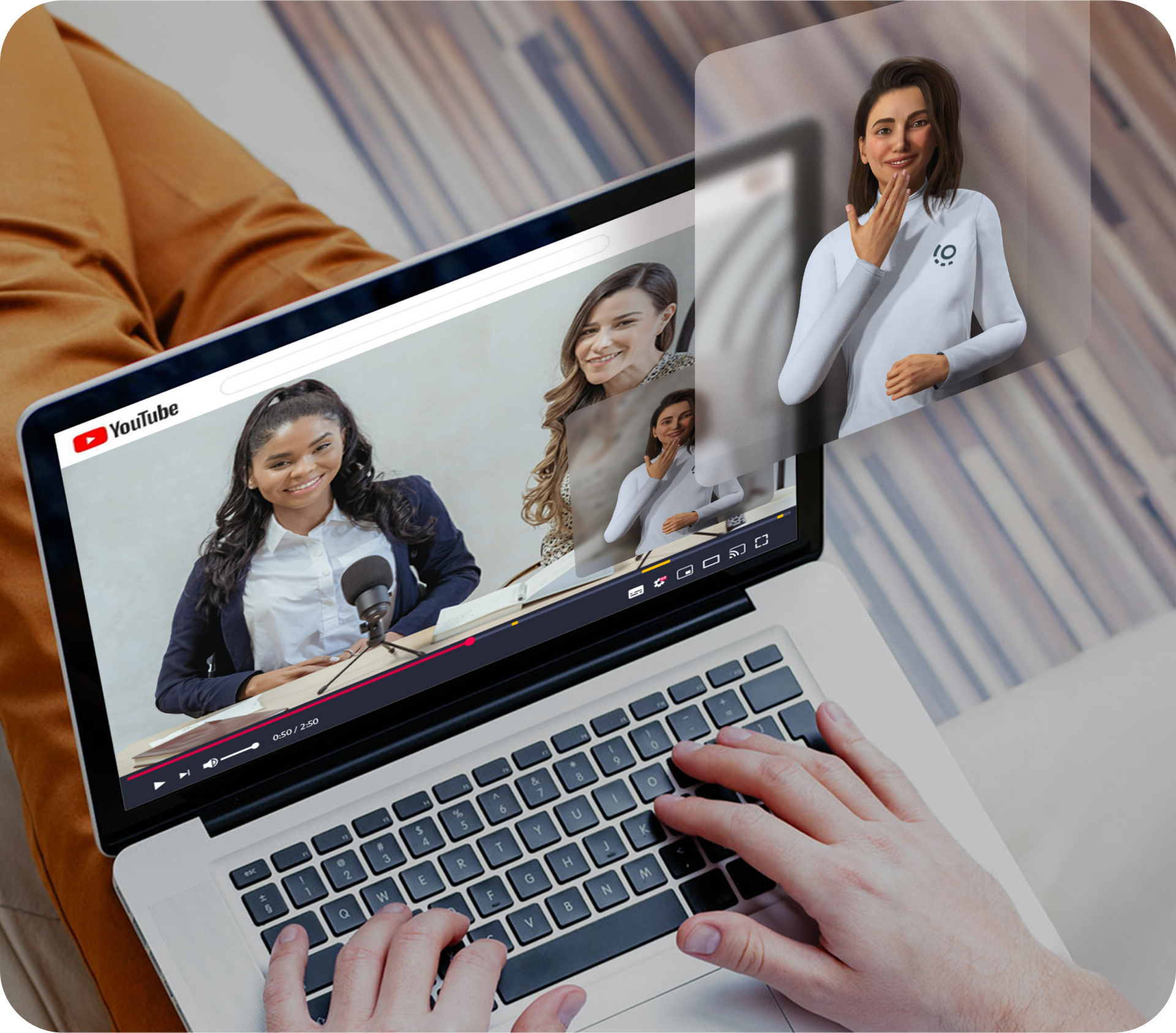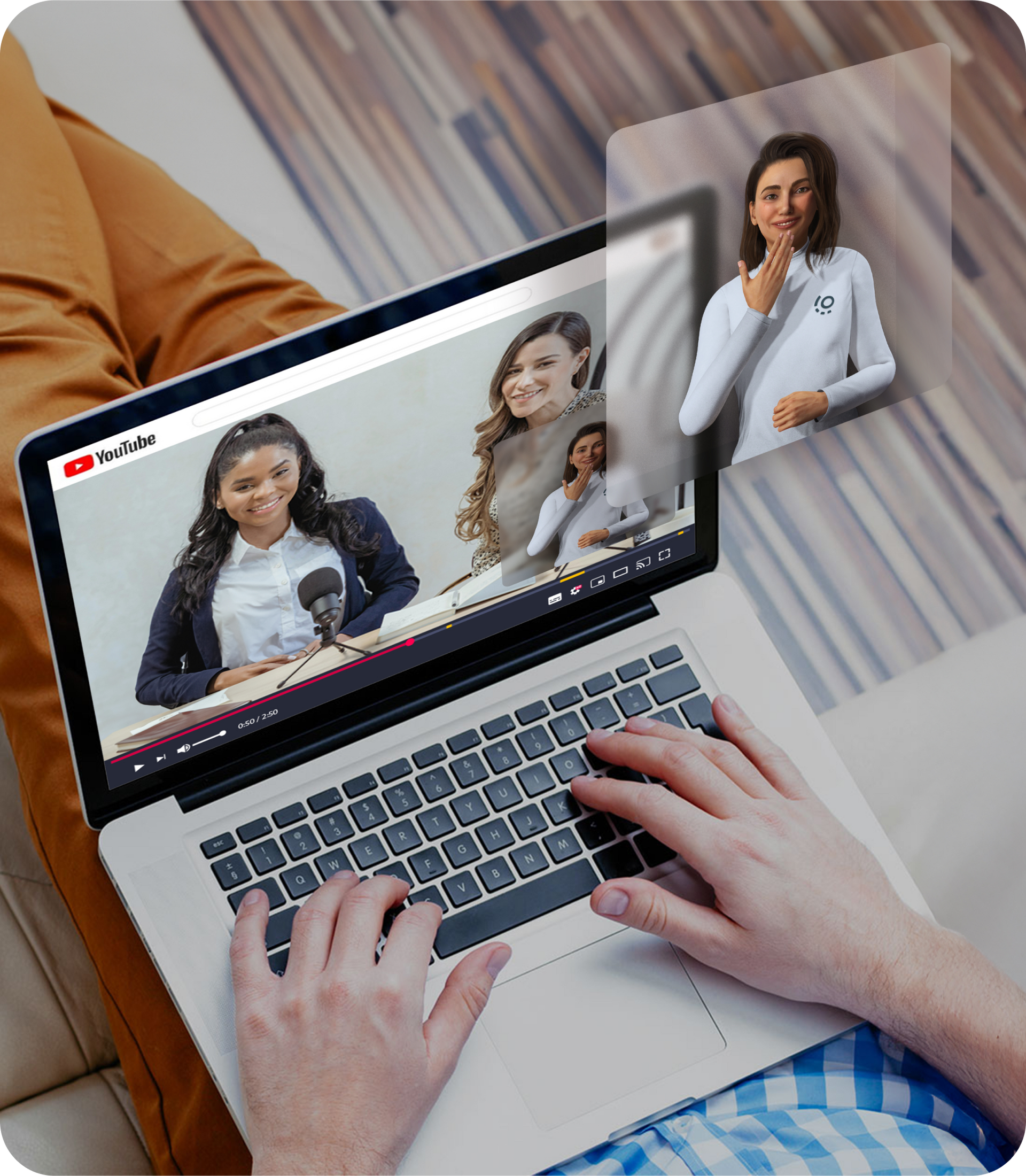Our Resources
Welcome to the 360 Direct Access Resource Center
Whether you're a business leader exploring inclusive customer service, an accessibility advocate, or simply seeking to learn more, this page equips you with the knowledge and data to take action and lead with inclusion.


Timeline and Evolution of Communication Access for Deaf and Hard of Hearing:
1964
First TTY was invented by deaf scientist Robert Weitbrecht
1974
First relay service was established by Converse Communications of Connecticut
1990
The American with Disabilities Act (ADA) was passed, which prohibits discrimination against individuals with disabilities in all areas of public life
1997
VRS started in Sweden
2003
VRS launched in the USA
2010
VRI started at Chicago’s Mercy Hospital and Medical Center
2014
FCC launched Direct Video Calling
Frequently Asked Questions
why direct video calling (DVC)?
VRS is free. Why would we add Direct Video Calling?
While it's true that Video Relay Service (VRS) is funded by the FCC and doesn’t directly cost your company, there are hidden costs and missed opportunities in relying solely on VRS. When a Deaf customer uses VRS, the call still connects to your English-speaking customer service representative — someone you pay — who may not be trained or comfortable navigating a three-way interpreted call. In fact, research shows:
- Over 50% of customer service agents report discomfort when supporting customers who don’t speak the same native language.
- 66% experience frustration with language barriers.
- 62% feel less confident handling such calls due to the risk of misinterpretation.
These challenges not only impact the customer experience but also reduce efficiency. Studies have shown that DVC reduces call times by up to 40%, thanks to direct, culturally fluent communication between Deaf customers and Deaf agents.
Adding DVC isn't just about access — it's about smarter business:
- Faster, smoother calls = lower handle time and better ROI.
- Improved customer satisfaction through direct communication.
- Empowerment of the Deaf community, 70% of whom are under- or unemployed, by creating meaningful employment opportunities.
In short: VRS may be "free," but DVC is efficient, inclusive, and ultimately more effective.
Why doesn’t the FCC pay for DVC (Direct Video Calling)?
The FCC funds Video Relay Service (VRS) because it's designed to provide basic functional equivalency — allowing Deaf and hard-of-hearing individuals to make phone calls to hearing people through a sign language interpreter.
Direct Video Calling (DVC) goes beyond that. It’s not about basic access — it’s about direct, inclusive, and culturally relevant customer service. That means Deaf customers connect directly with representatives fluent in ASL, without needing a third-party interpreter.
Because DVC is a business-driven solution, tailored to improving customer experience and reducing call times, it falls outside the FCC's mandate. The FCC covers what’s necessary for equal access — not what companies choose to do to create a better, more efficient, and more inclusive experience.
In short: FCC pays for access (VRS). Companies invest in experience (DVC). And with DVC, that investment pays off — through faster resolution times, higher customer satisfaction, and the opportunity to create jobs for the 70% of Deaf Americans who are under- or unemployed.
Why not just use online chat?
Online chat is a great tool — but it’s not a one-size-fits-all solution, especially for the Deaf community. Here’s why:
- ASL isn’t English: American Sign Language (ASL) is a visual language with its own grammar and structure — it’s not simply "English on the hands." Many Deaf individuals prefer or are more fluent in ASL than written English, especially for complex conversations like customer service interactions.
- Chat can feel impersonal and slow: Online chat often means long wait times, impersonal scripts, and frustrating back-and-forth. DVC (Direct Video Calling) allows for real-time, expressive, natural communication — the way Deaf people actually communicate.
- Not all Deaf customers are comfortable with written communication: Relying only on text can unintentionally exclude part of the Deaf community, especially those for whom English is a second language.
- Online chat doesn’t build trust: When a Deaf customer connects with someone who signs fluently and understands their culture, it creates a genuine human connection — something chatbots and typed messages just can’t do.
In short: Chat might be convenient for some, but it doesn’t replace the power of direct, face-to-face communication in sign language — and that’s what 360 Direct Access delivers.
understanding the differences
What is the difference between using VRS (Video Relay Service), VRI (Video Remote Interpreting), and DVC (Direct Video Calling)?
VRS (Video Relay Service):
- Purpose: Used by Deaf callers to contact hearing people via phone.
- How it works: A Deaf caller connects to a remote sign language interpreter, who then places a voice call to the hearing person. It’s a 3-way conversation.
- Cost: Free for users (funded by the FCC).
- Limitations: Hearing reps may struggle with interpreted calls. Slower communication. No direct connection.
VRI (Video Remote Interpreting):
- Purpose: Used on-site, often in medical or legal settings.
- How it works: A hearing person and a Deaf person are in the same room, and a remote interpreter is brought in via video to interpret the conversation.
- Cost: Paid by the business or organization.
- Limitations: Still relies on an interpreter. Not ideal for customer support scenarios.
DVC (Direct Video Calling):
- Purpose: Empowers Deaf customers to directly call Deaf or fluent-in-ASL representatives.
- How it works: A one-on-one video call in sign language — no interpreter needed.
- Cost: Paid by the company as part of inclusive customer support.
- Benefits: Faster call times (up to 40% shorter). Better customer experience. Builds trust and loyalty with the Deaf community. Creates jobs for Deaf professionals (70% under/unemployed).
In short: VRS = interpreted phone calls for everyday use. VRI = interpreted in-person interactions. DVC = direct, personal, and efficient — the future of accessible customer service.
How is 360 Direct Access different from the VRS service that callers use now?
How we're different from VRS: VRS relies on a third-party interpreter to relay messages between a Deaf caller and your hearing representative — creating a three-way conversation that can be slower and prone to miscommunication.
360 Direct Access connects Deaf customers directly with Deaf or fluent-in-ASL agents, allowing for smoother, faster, and more culturally aligned communication — no interpreter needed. This reduces call times, improves customer satisfaction, and empowers Deaf professionals — it's a win-win.
How we’re different from other DVC providers:
- ✅ Deaf-led and Deaf-run: We’re not just building for the community — we are the community.
- ✅ 100% disability and woman minority-owned: Our leadership reflects the diversity we strive to support.
- ✅ Built from scratch, in-house: Our platform was designed with a Deaf lens, not retrofitted from hearing-centric solutions.
- ✅ Industry expertise: Our executive team brings decades of experience in Deaf access, technology, and inclusive design.
- ✅ Award-winning service: Recognized for innovation and impact, with a proven track record.
- ✅ Low turnover, high trust: Our team sticks around because we’ve built a company rooted in purpose and belonging.
Why would we use the 360 Direct Access WebRTC platform instead of others?
Because we’re not just a tech company — we’re a purpose-built, community-led solution designed specifically for Deaf users, by Deaf professionals. Here’s why our WebRTC platform stands apart:
- 🔹 Built with a Deaf Lens: Unlike generic platforms adapted for accessibility, our technology was built from the ground up by Deaf developers and designers who deeply understand the communication needs of Deaf users.
- 🔹 Tailored User Experience: Everything from our interface to our workflows is optimized for seamless sign language communication — no awkward workarounds or forced hearing-centric design.
- 🔹 Deaf-Owned. Deaf-Run. Disability and Woman Minority-Owned: Working with us supports a values-driven, equity-first business that reflects the very community you're aiming to serve. Representation matters — and we lead by example.
- 🔹 Award-Winning, Proven Performance: We’ve earned industry recognition for our innovation and accessibility. Our platform delivers low latency, high video quality, and reliable performance — critical for real-time sign language conversations.
- 🔹 Hands-On Support and Partnership: We don’t just hand over software — we partner with you to train staff, review call metrics, and ensure long-term success.
Bottom line: 360 Direct Access isn’t just another WebRTC platform — it’s a culturally fluent, community-powered tool that creates better outcomes for your customers and your business.
data and reporting
How does 360 Direct Access impact my company’s bottom line?
360 Direct Access delivers measurable value to your business in two powerful ways: 1. Reduced Operational Costs: Our direct communication model reduces call handle times by up to 40% compared to traditional interpreted relay calls. Shorter calls = more efficient agents = lower labor costs and higher productivity. 2. Access to a Loyal, Underserved Market: There are millions of Deaf consumers worldwide who use sign language and prefer direct communication. This community represents billions in untapped spending power — and they notice when brands invest in true accessibility. Providing culturally aligned, inclusive service builds brand loyalty, trust, and repeat business.
Bottom line? You save time, reduce costs, and grow your customer base — while doing the right thing for accessibility and inclusion.
How do we access the total number of relay minutes to our company?
To get this information, you can request a report directly from the FCC. You'll need to provide them with your company’s main phone numbers, and they will run a VRS usage report showing how many relay minutes have been used to reach your organization. We’ll guide you through the process — including connecting you with the right FCC contacts — and support you in interpreting the data. This insight helps you accurately assess call volume and make informed decisions about staffing and support for Deaf customers.
How many Deaf customers customers are there in each country?
-




